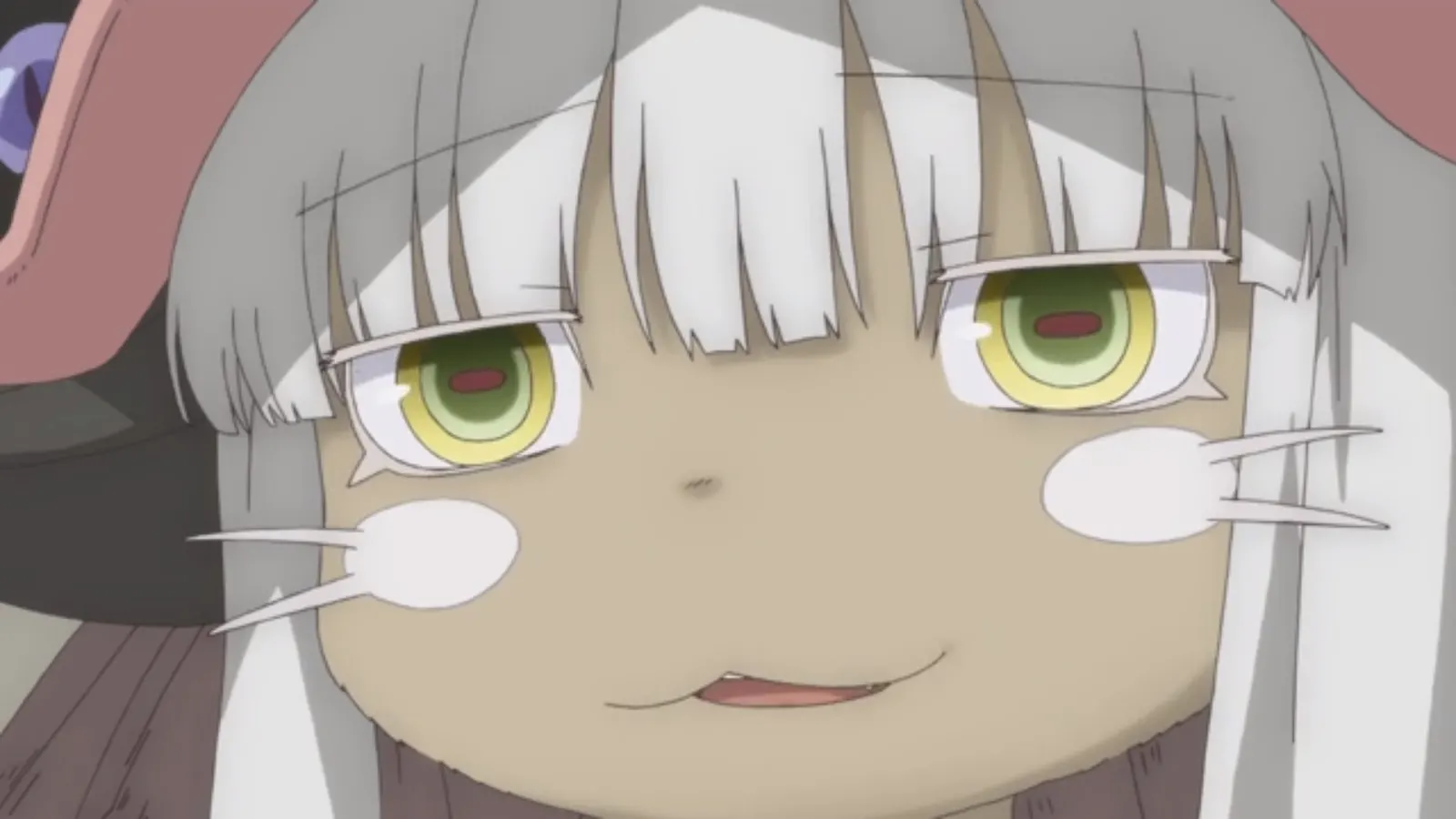
WARNING: SIGNIFICANT, DETAILED SPOILERS AND GRUESOME IMAGERY AHEAD. YOU HAVE BEEN WARNED.
Don’t be fooled by the apparently child-friendly character designs on the packaging of this febrile descent into danger and madness, Kinema Citrus’ 2017 13-episode adaptation of Akihito Tsukushi’s web manga Made in Abyss. What appears at first to be a cutesy kiddie’s adventure story evolves into a claustrophobic, disturbing fable of single-minded determination and a desperate struggle against overwhelming odds that portrays both brutal violence and severe bodily mutilation involving children. I cannot stress this enough – despite all appearances, this show is not suitable for kids. This UK release has been appropriately rated by the BBFC as “15” for its strong content.
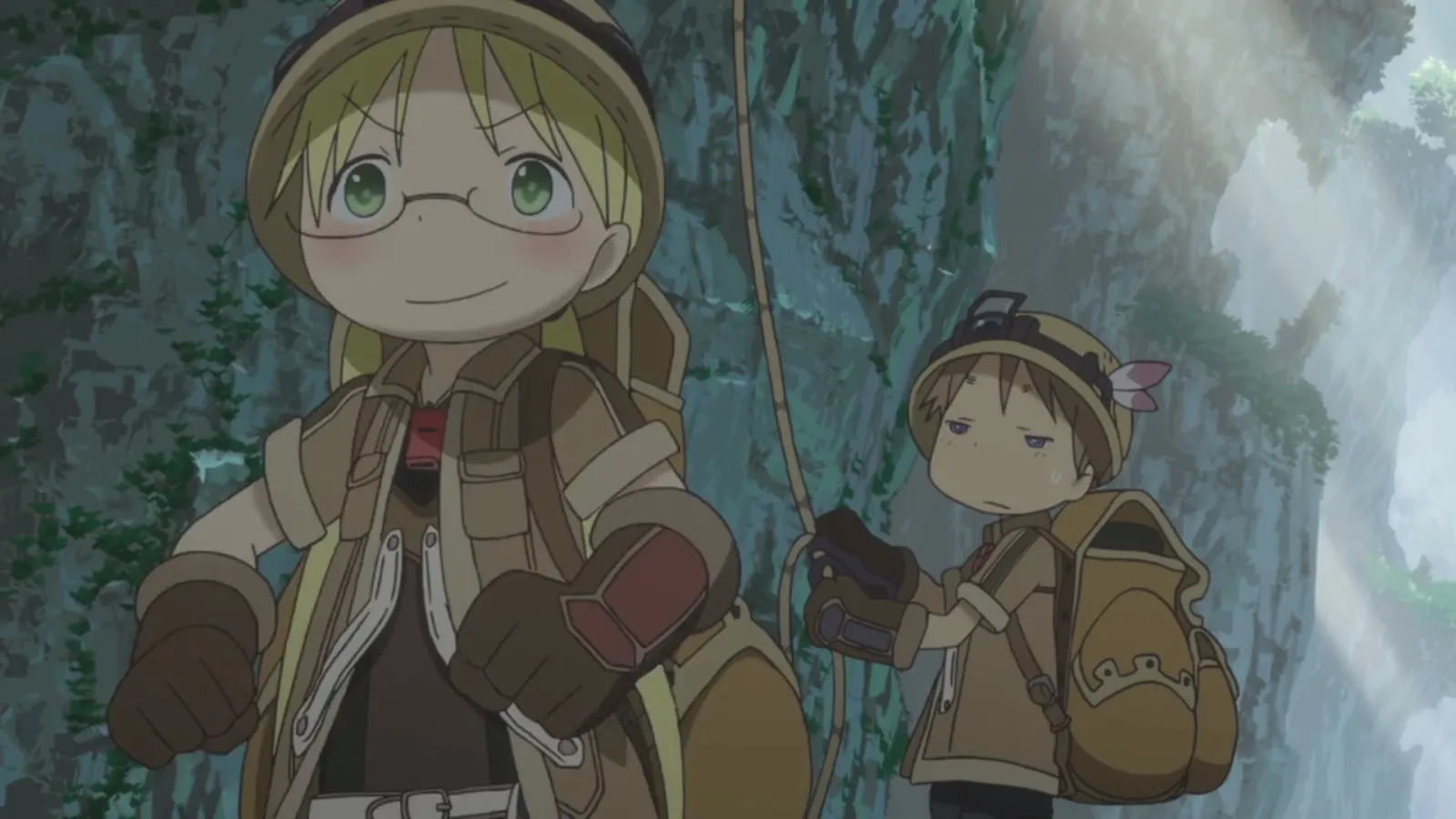
Made in Abyss is no mere snuff show though – this is a high quality, gorgeous production that in its first few episodes evokes a Miyazaki-esque Laputa – Castle in the Sky aesthetic with shimmering blue sky, verdant green vegetation, a quaint ramshackle town and colourful exotic creatures in an Edwardian-esque fantasy setting. Episode one quickly conjures a sense of wonder and mystery at the fascinating world inhabited by the main protagonist Riko, an apparently orphaned 12-year-old girl, daughter of the missing Lyza the Annihilator, a legendary “White Whistle cave raider”. Junior cave raider and “Red Whistle” Riko wants nothing more than to follow in her absent mother’s footsteps and become an Indiana Jones-like explorer of the Netherworld – of the titular Abyss that plummets many kilometres beneath her hometown Orth, which itself encircles and encroaches upon the edge in vertigo-inducing fashion.
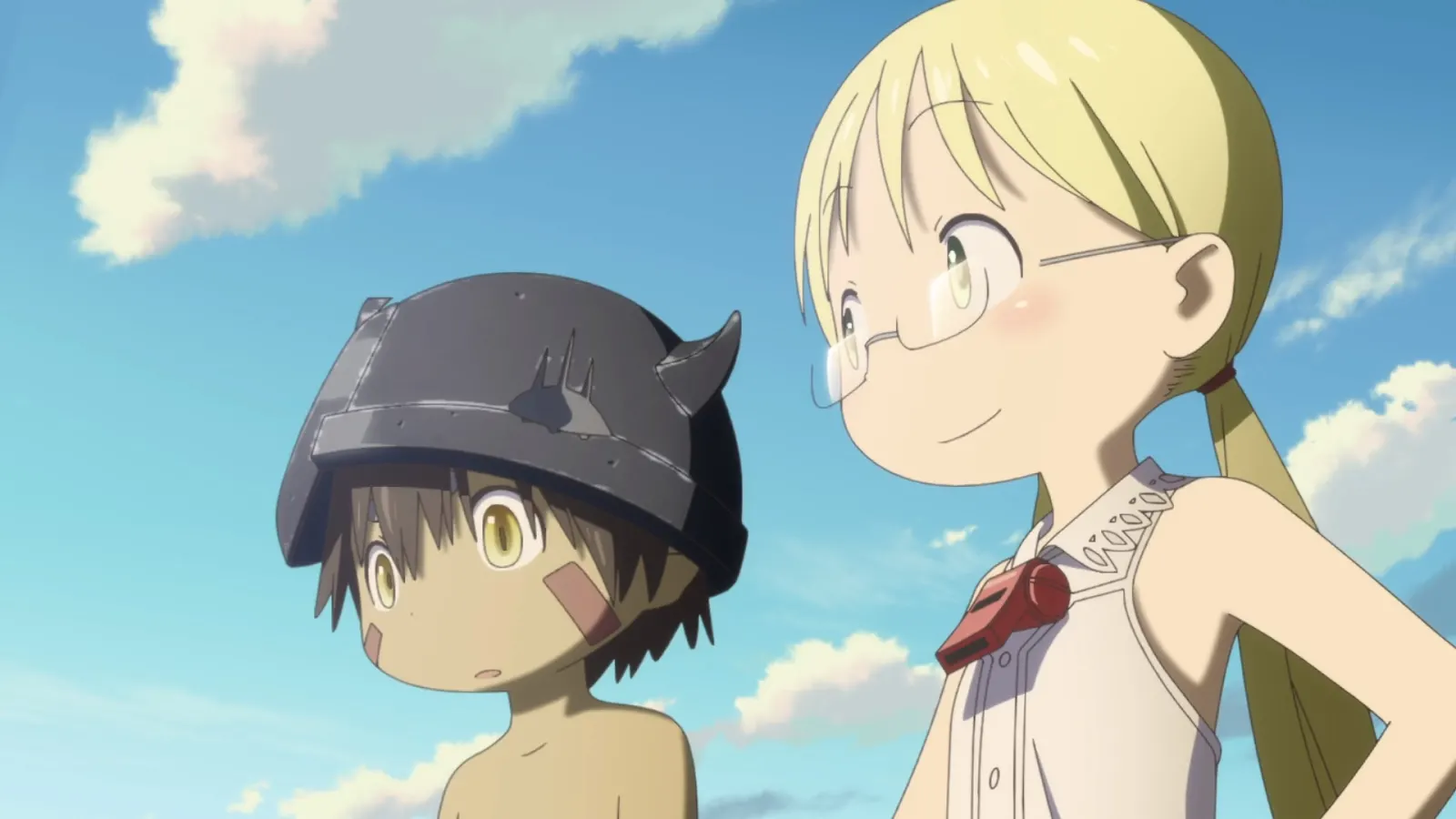
Kick-starting the plot is Riko’s encounter with the mysterious robot boy she later names Reg (hard “g” like in “egg”) who is amnesic, possibly because of the enormous shock of electricity she uses to wake him from his post-blast stupor. Yes, they first meet because he saves her life from a rampaging toothy flying monster with the brutally overpowered doomsday weapon embedded in his hand – unfortunately every time he fires it he falls unconscious for at least two hours afterwards. So Riko thanks him for rescuing her, not only by electrocuting him but by also attempting to break through his tough skin with a knife then a drill, probing his anal cavity plus making sketches and handwritten notes about how his penis appears to be fleshy. I guess that’s one way of making the point that she’s inquisitive and willing to do anything for the pursuit of knowledge. And it isn’t only Riko who appears to be obsessed by Reg’s junk, much to his horror, it becomes something of a (deeply questionable) running joke just how many other characters comment on/assess his genitalia.
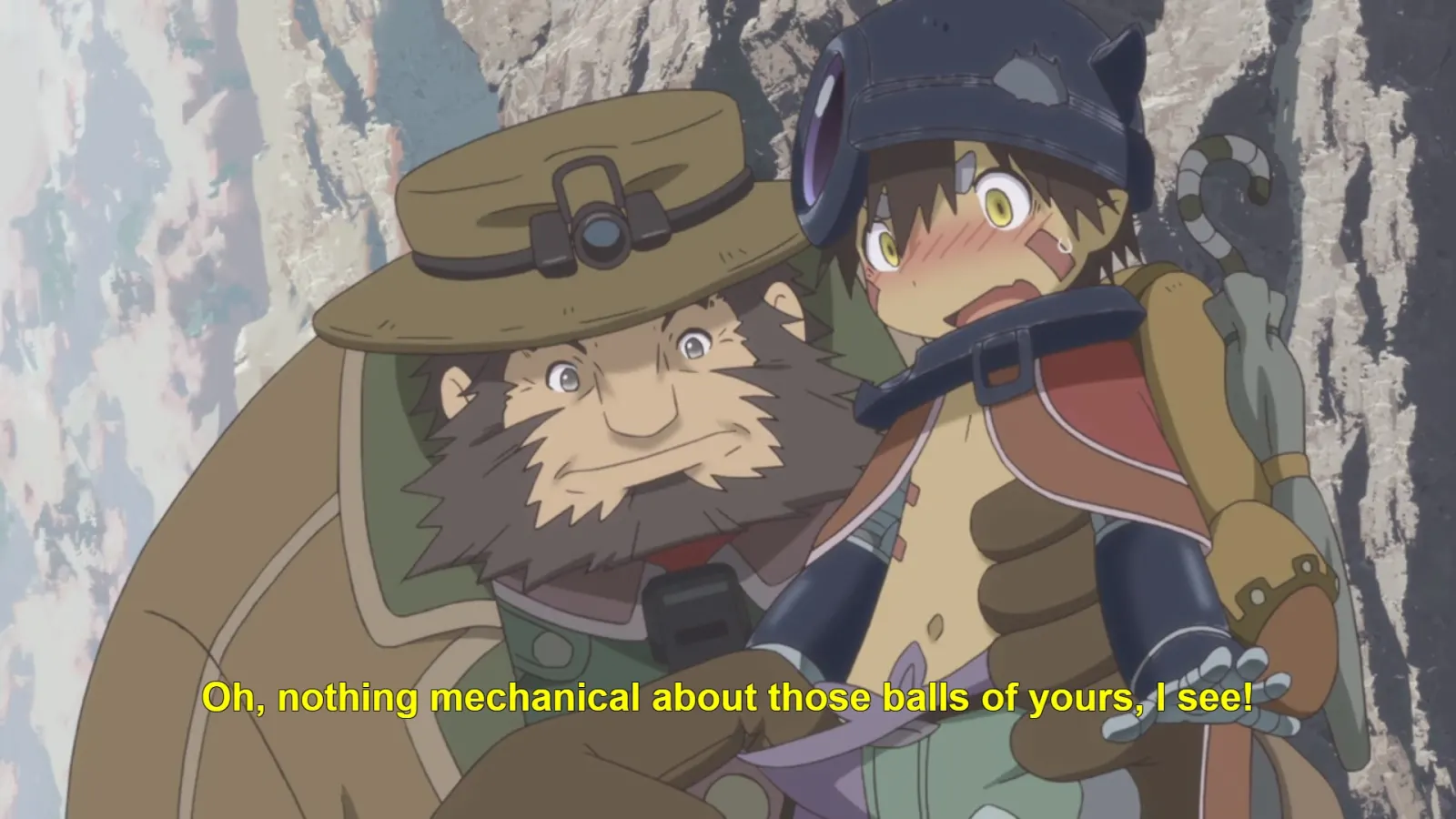
I’m unsure how much of this is due to a difference between cultural attitudes to childhood nudity between Japan and the West, but there are some other uncomfortable episodes involving both male and female child characters peppered throughout the narrative. It could be that the mangaka is a bit of a perv – some of the images in his manga certainly would attest to this – thankfully the more explicit situations are toned down in this adaptation. There’s certainly no 12-year-old-prepubescent-Riko nipples like in the manga – here they’re hidden by her strategically placed hair. In addition I counted at least 3 episodes of urinary incontinence. (Two were appropriately triggered by horrific pain – in a way an acceptable and realistic touch.) These vaguely smutty interludes don’t add much to the story other than a mild discomfort on behalf of the viewer. At least they are sparse and short-lived. What’s with punishing kids by stringing them up naked anyway? Who hurt you, Tsukushi-san?
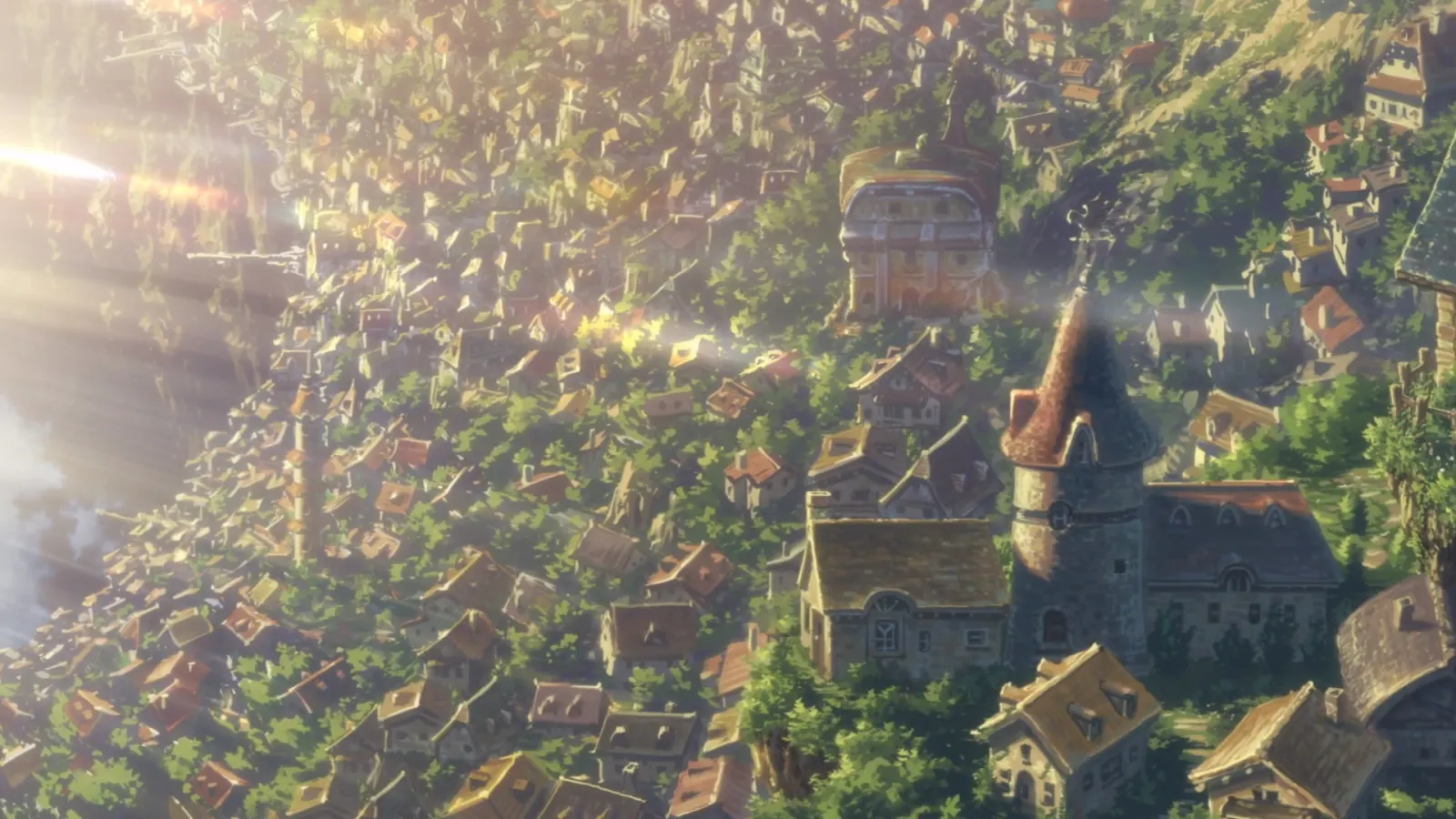
The first three episodes are an efficient reconfiguration and adaptation of the first volume of the manga. I felt the pacing of this was practically perfect. I watched this with my wife (who although she would describe herself as an anime fan is very fussy about what she will watch with me) and she felt that the introduction could have been longer. She particularly liked the character of Jiruo – the twenty-something “Blue Whistle” who is referred to as “Leader” by the kids at Belchero orphanage, where Riko and her friends (and then Reg) live. She was disappointed when he was no longer a significant part of the story. We watched the dub and I found his voice actor to give an overly flat delivery, but she argued this was deliberate, he was a pretty laconic dude.
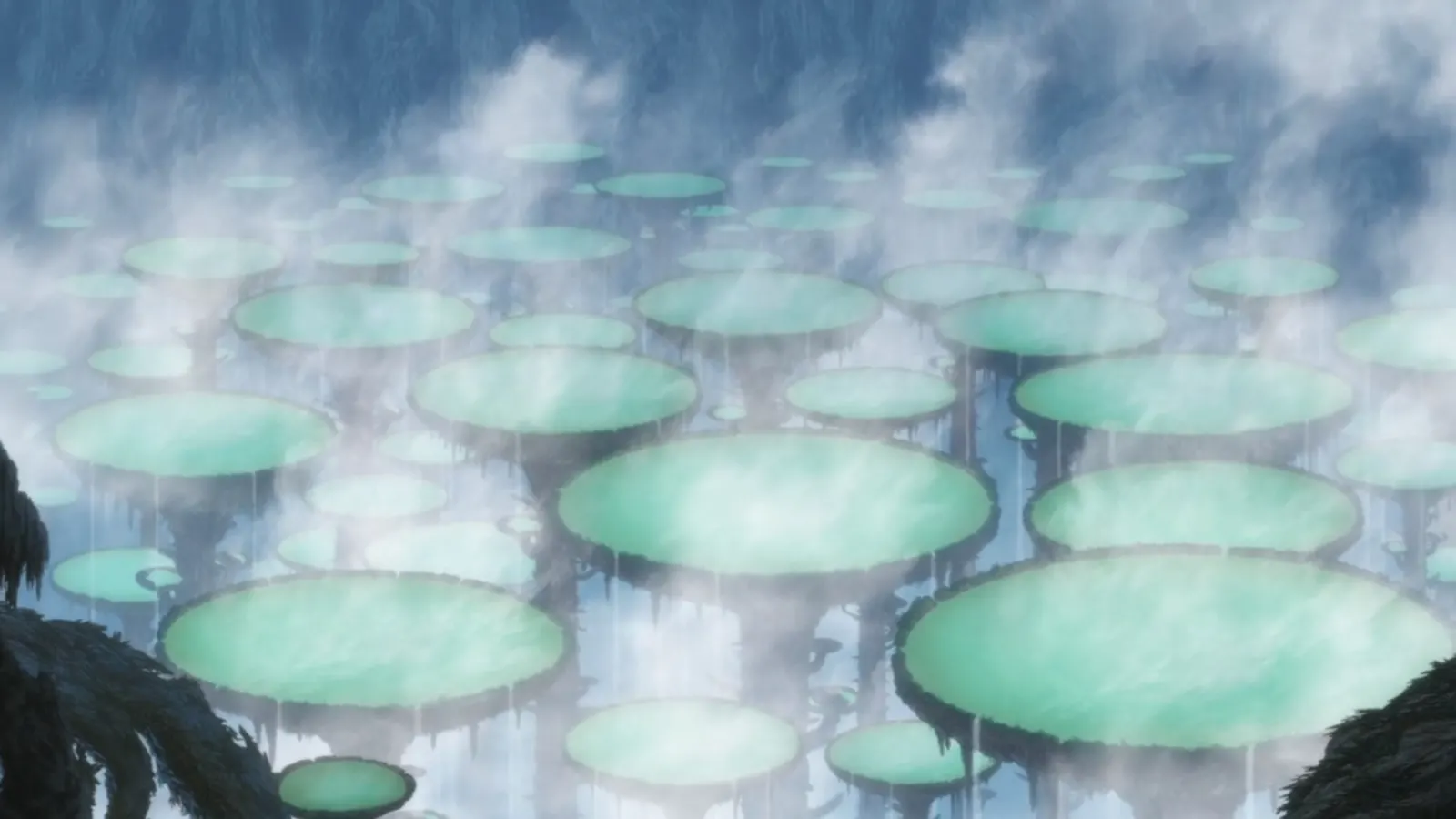
Riko and Reg’s eventual unauthorised descent into the mysterious Abyss is triggered by the arrival of Lyza’s own white whistle in the city, retrieved by another cave raider. This would normally be a sign that the whistle-bearer had died, but an unsigned letter accompanying the whistle states “I’ll be waiting for you at the bottom of the netherworld”. Riko of course assumes this is a letter to her from her mother and so is lit a fire in her belly that propels her downwards to the uncharted, dangerous depths.
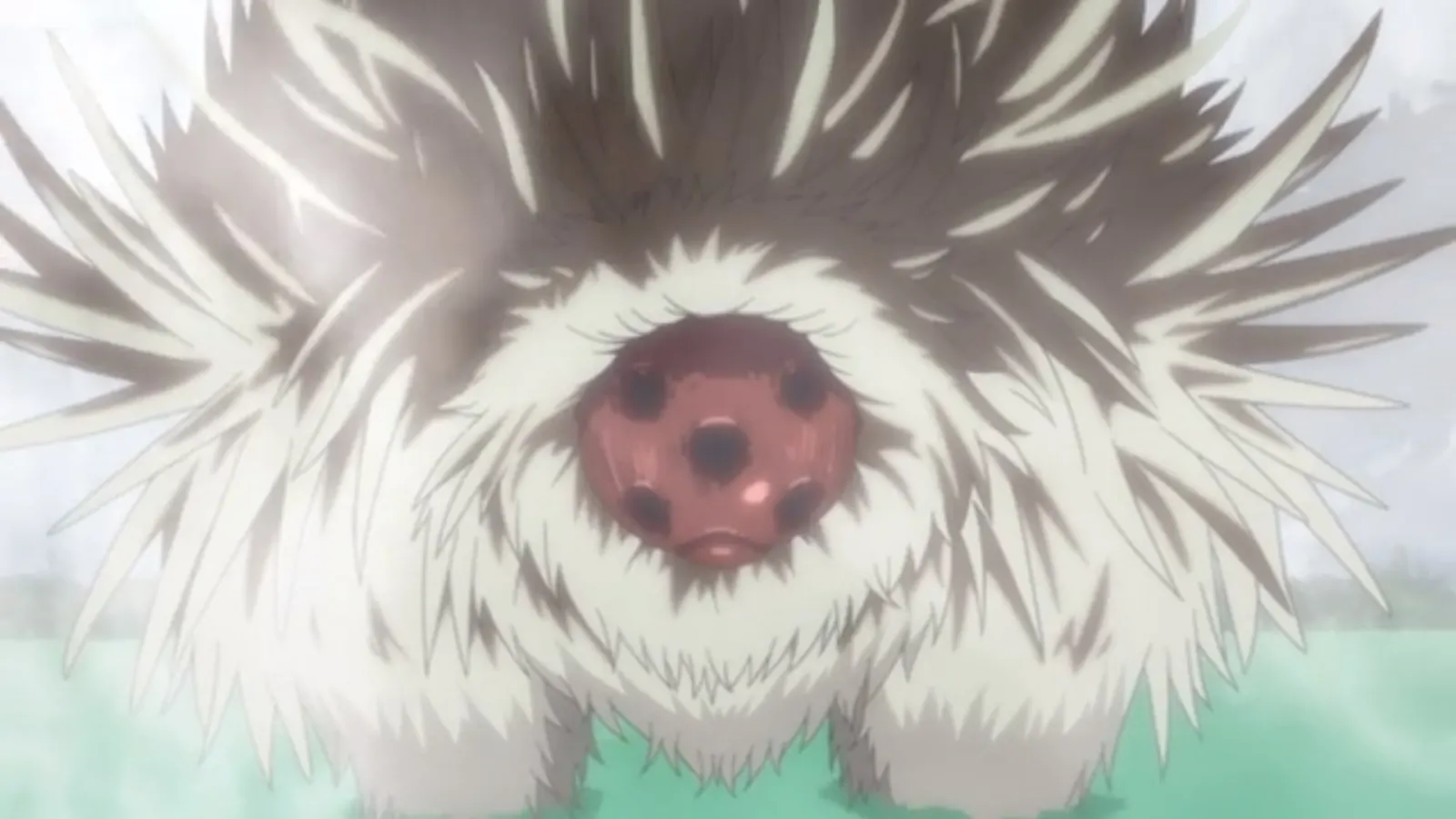
No journey of discovery would be exciting without risks and dangers along the way, and the Abyss is full of appalling creatures and environments that only escalate in threat to Riko and Reg. It’s a testament to the imagination and design skills of the author that these creatures are varied, beautiful and terrifying. Riko often explains what they are and how they are dangerous in a way that is integral to the plot and doesn’t present the kind of clumsy info-dumping you might find in a lesser show. Many of the animals are animated in a loose, painterly way that accentuates their organic motion and looks quite different to the usual anime aesthetic. Although the human characters tend to be cutesy, most of the animals are not – all staring eyes, gaping maws and poison-tipped spears. The 4th-layer-residing Orb-piercer is a particularly nightmarish creation.
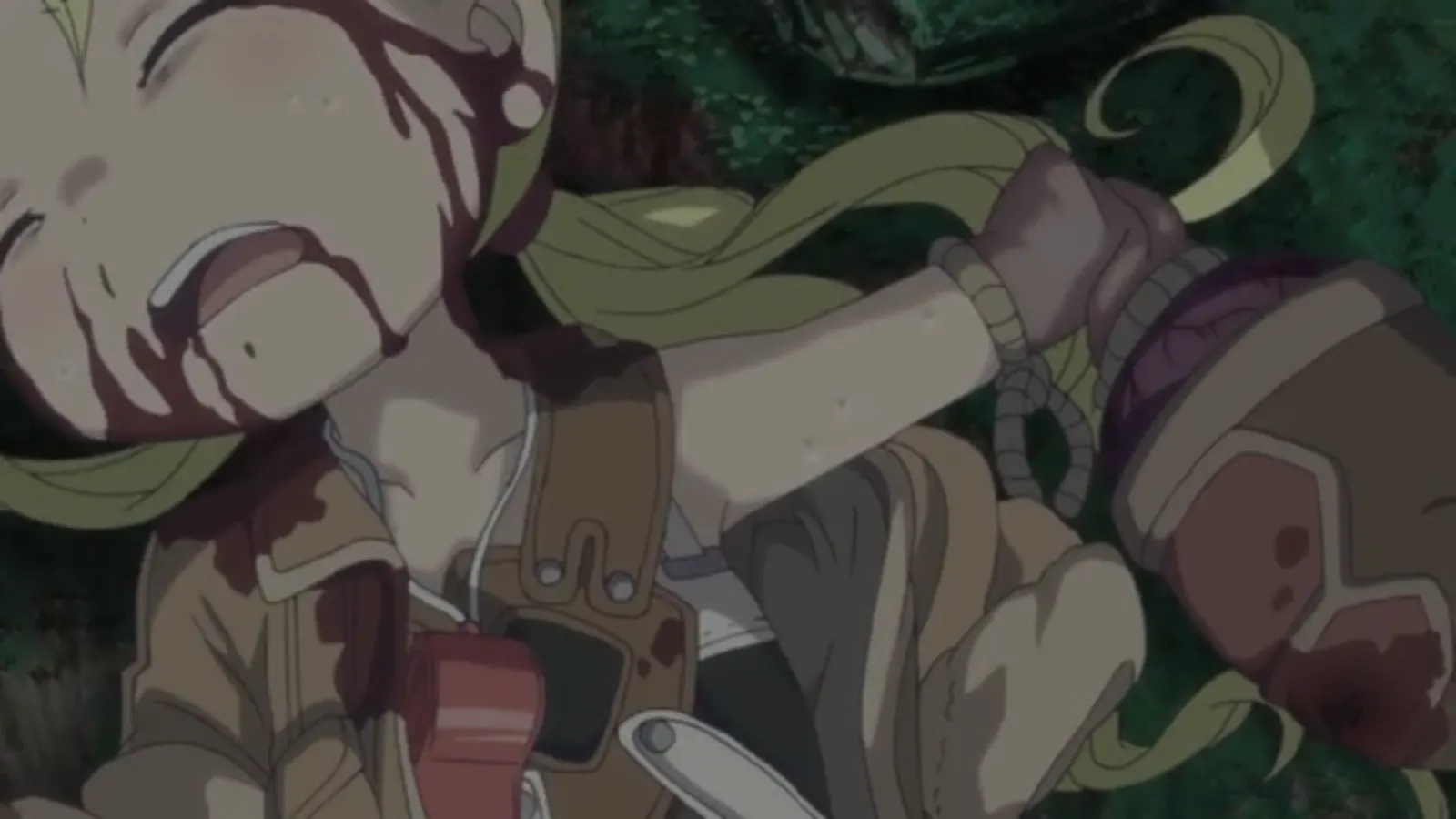
When confronted by this cavalcade of horrors, Riko is resourceful, intelligent and knowledgeable but fragile. Reg is nigh-on indestructible and overpowered but he lacks foresight and intuition. Their perilous surroundings force them to rely on one another and work to each other’s strengths. They both develop a great deal as characters, through pain, hardship and loss. Made in Abyss does not sugarcoat their journey like true children’s stories might. Victories are won through hard work, sacrifice and not a little luck. Reg must learn to protect Riko without resorting to his primary weapon, as to do so would leave her unprotected for hours. Despite this, Riko’s body does not survive to the end of the show completely intact. One scene involving a poisoned limb, a tourniquet and attempted amputation is particularly horrific. I can’t remember that last time a show caused me so much emotional discomfort at the sheer inevitability of a character’s suffering – both Riko as the recipient of physical pain and Reg as the reluctant provider. Poor Riko also bleeds from every orifice, as if having a bone broken and poison threaten her life wasn’t enough.
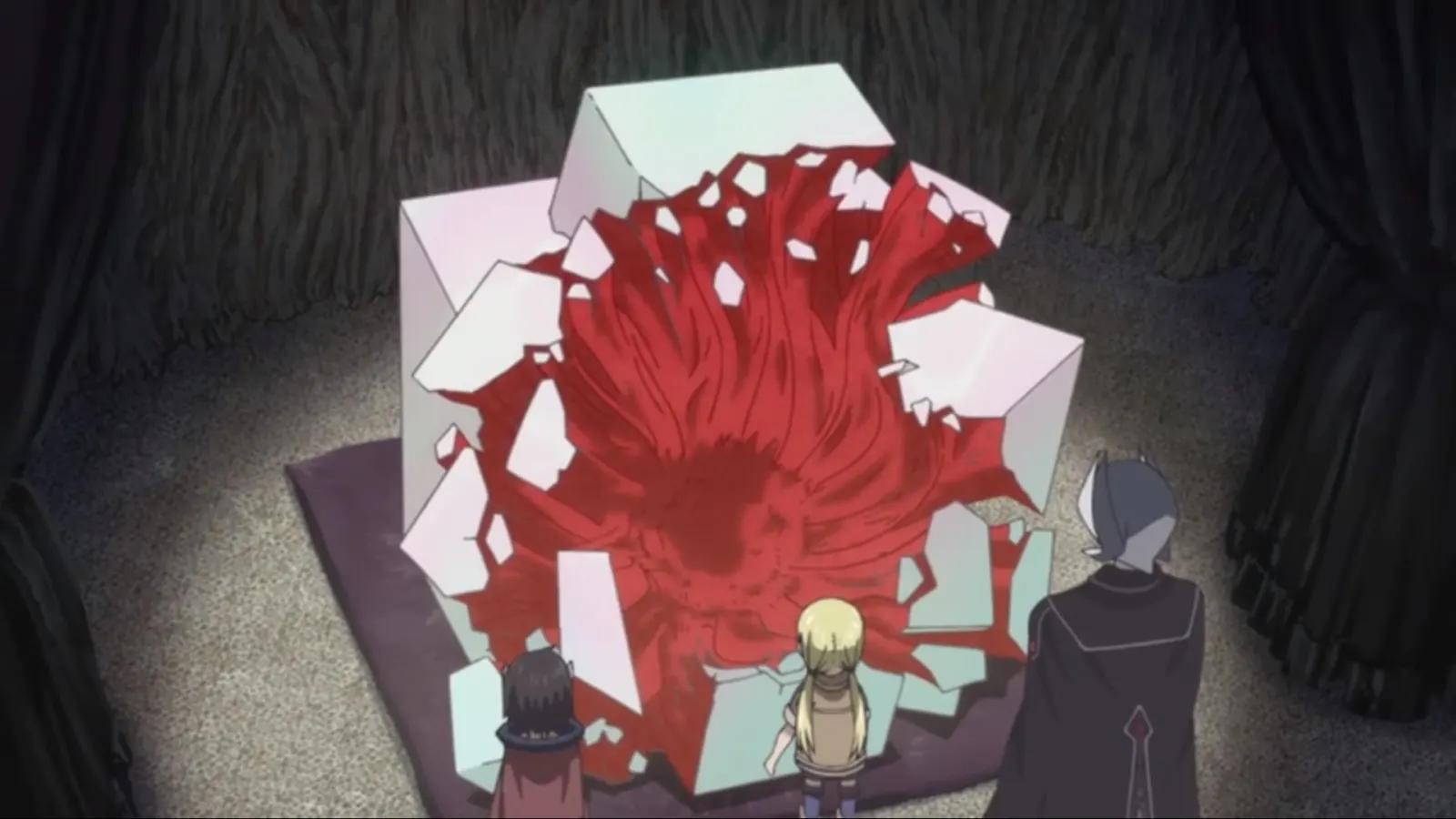
One of the author’s masterstrokes in the evocation of suffering is in the concept of “the Curse of the Abyss”. This curse only comes into effect when a cave raider attempts to ascend even a small distance back upwards. In a way it acts like a trap – descending causes no problems, but the deeper one goes, the worse becomes the cost of return. In the upper layers this is restricted to nausea, a bit lower – confusion and hallucinations. Deeper down even a slight ascension causes horrendous pain and profuse bleeding. Deeper still and unscathed return becomes impossible – attempted return leading to death or horrific mutation. The curse makes an interesting parallel to real-life afflictions like altitude sickness and the bends – both conditions linked to sudden changes in pressure or altitude that can be no less life-threatening. Riko knows that her journey is only one-way, yet pursues it single-mindedly despite every roadblock in her way.
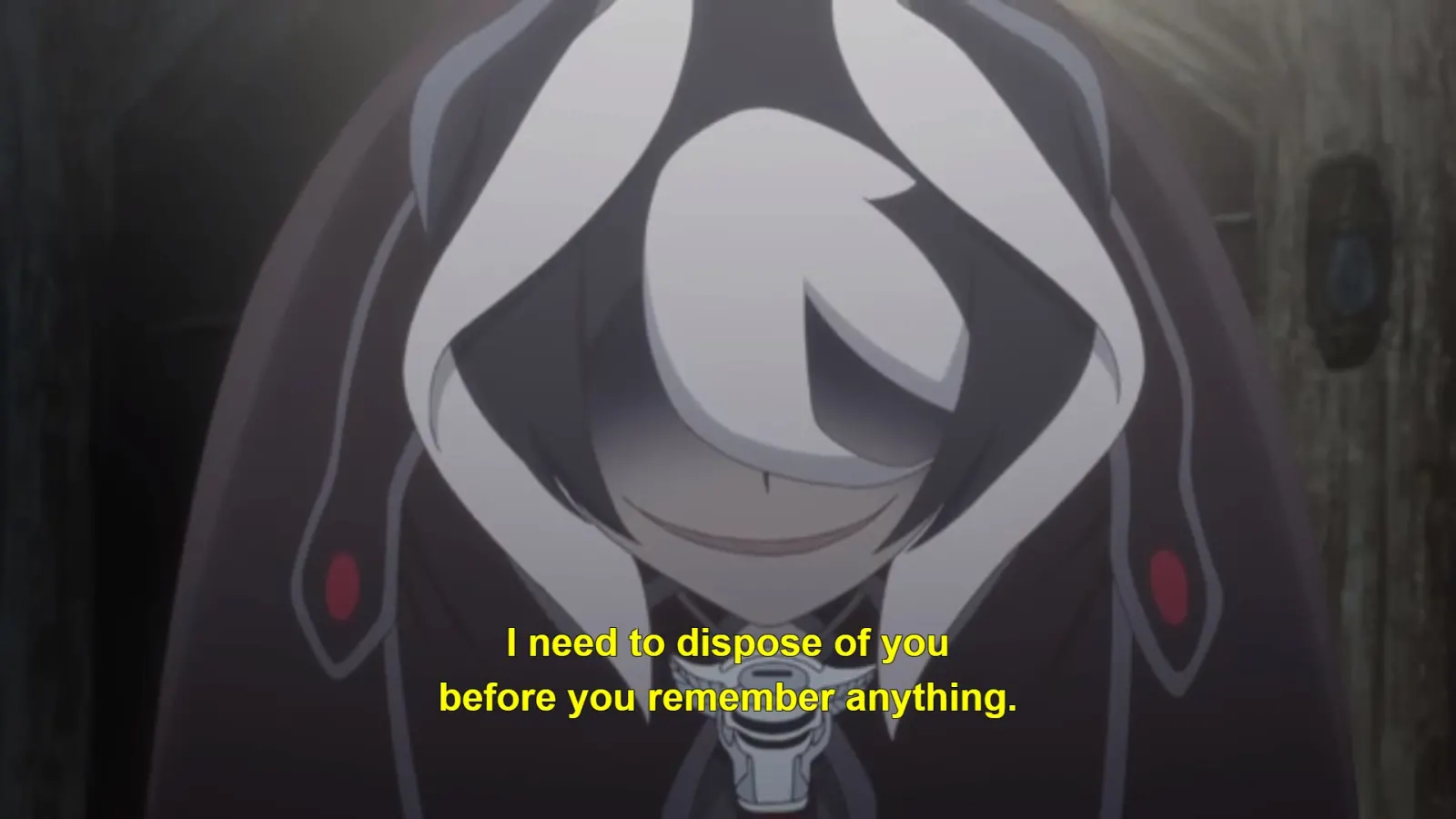
The environments and creatures of the Abyss are not the only dangers. Worse even than them may be the other humans they meet, or at least the elite White Whistles, who may not even qualify as human any more, so altered are they by their experiences. First encountered is Ozen the Immovable, a creepy 2-metre tall ogre of a woman who is supernaturally strong. Her backstory ties her to the story of Riko’s (still)birth (and subsequent Abyss-relic-fueled resurrection). One niggle about Ozen – paternal figure Black-Whistle Habolg vaguely warns Riko that Ozen has an unusual personality. If he’d truly been caring, would he not have warned her that she’s a grade-A sociopathic uber-bitch with a sadistic streak a mile wide? (My wife’s description of her personality was an unprintable-in-polite-company 4-letter proto-germanic word for female genitalia that I’ll leave to your imagination/febrile googling.)
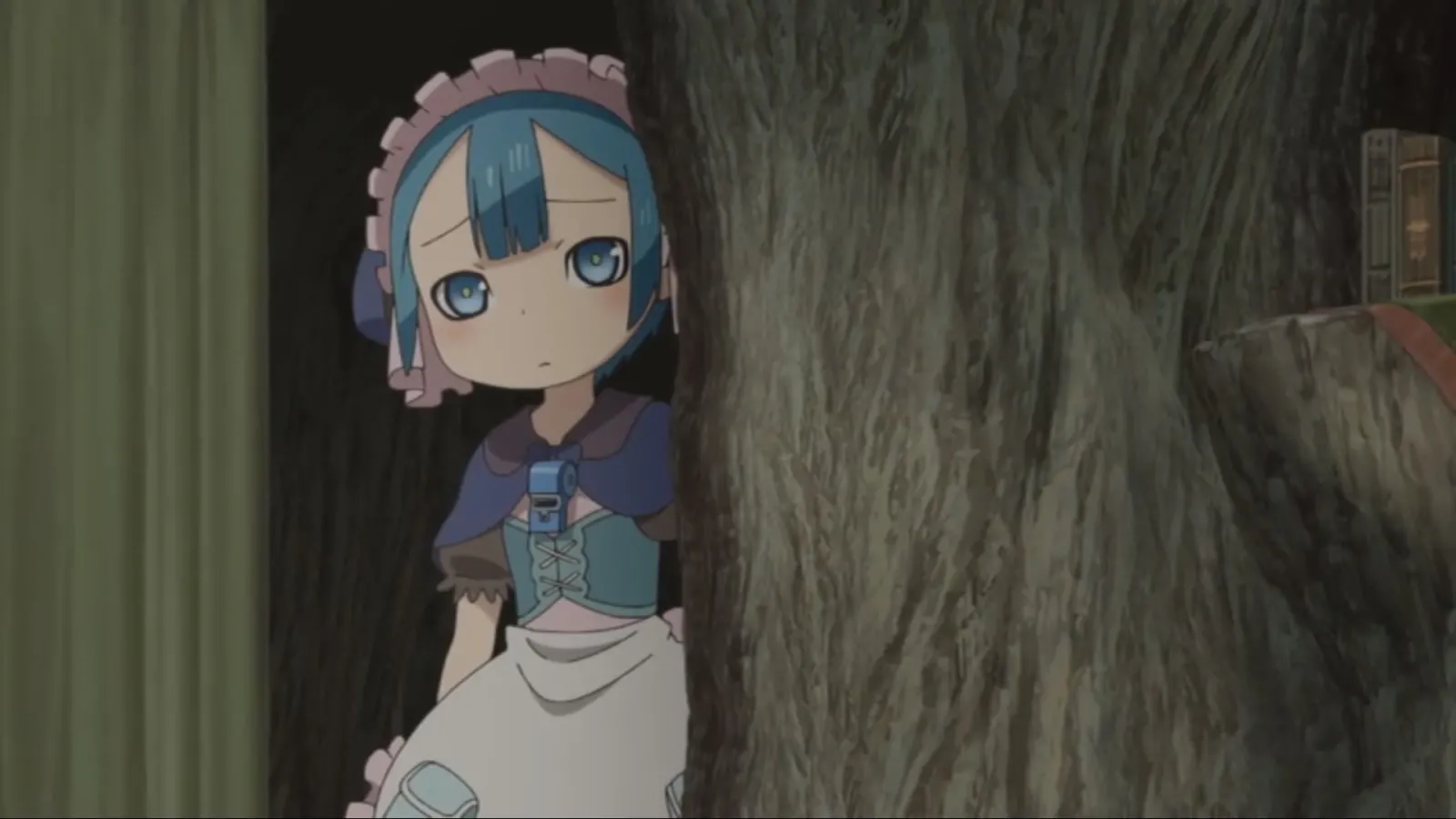
The show kind of tries to redeem her a little by making her out to just be a tough taskmaster, but no. She’s abusive and horrid. Her little protege Marulk looks like a girl and wears a dress but is heavily hinted to be a boy that Ozen forces to present as a girl. I don’t know if this has any further relevance to the later plot, but it isn’t explained in any way and I’m not sure what the author was trying to say with this character. Marulk seems to suffer from a severe case of Stockholm Syndrome when it comes to Ozen. They are clearly terrified of her, yet also seem to hold her in high regard. It’s a bit uncomfortable.
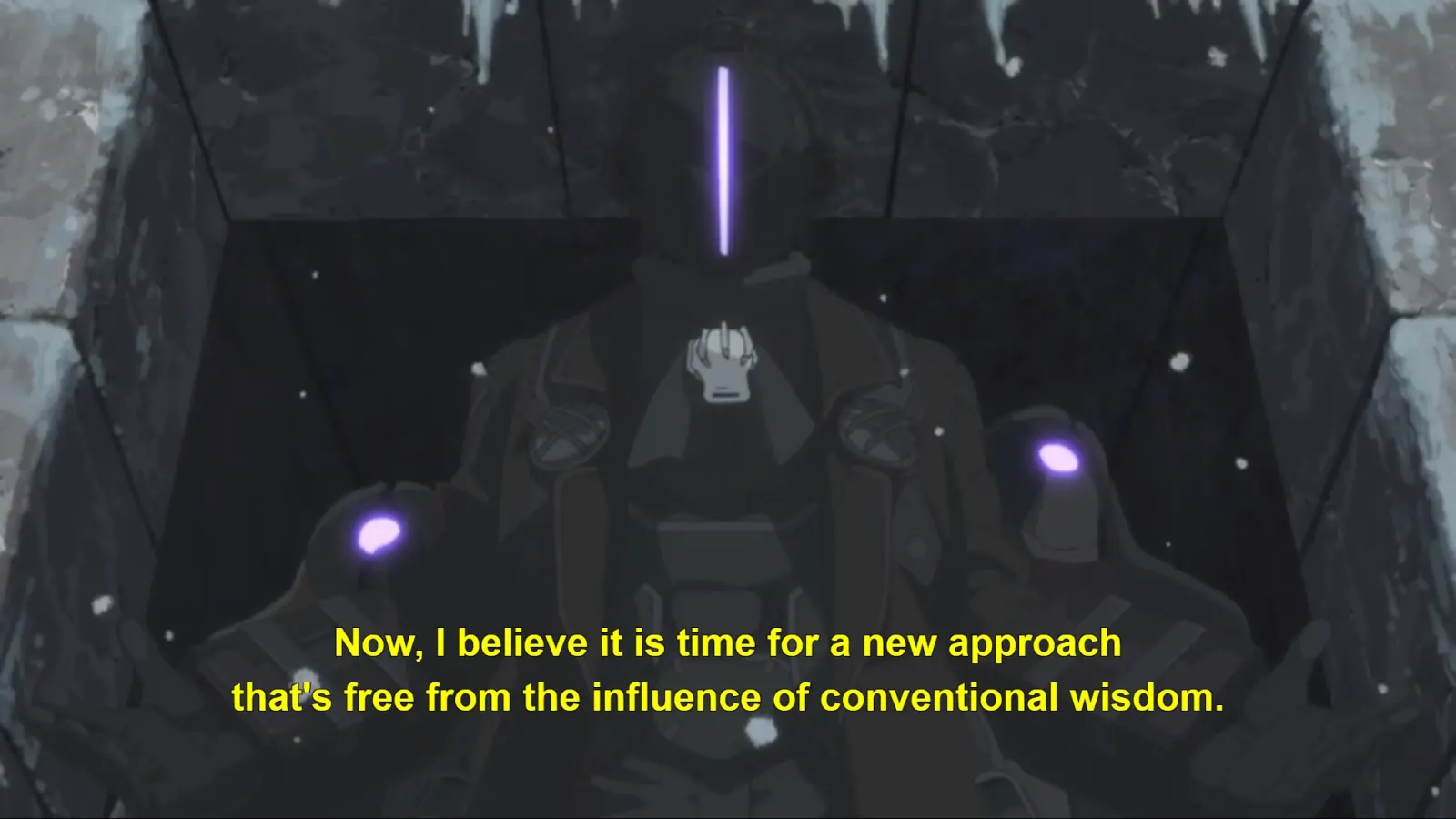
The next White Whistle (seen mainly in flashback and not yet directly encountered by our main characters) is Bondrewd the Novel, who seems to be even more of a scoundrel than Ozen. I got real His Dark Materials vibes from Bondrewd, with his similarities to Lord Asriel from Philip Pullman’s phenomenal trilogy. Like Asriel, Bondrewd seeks out children to perform horrific experiments on them to satiate his own scientific goals.
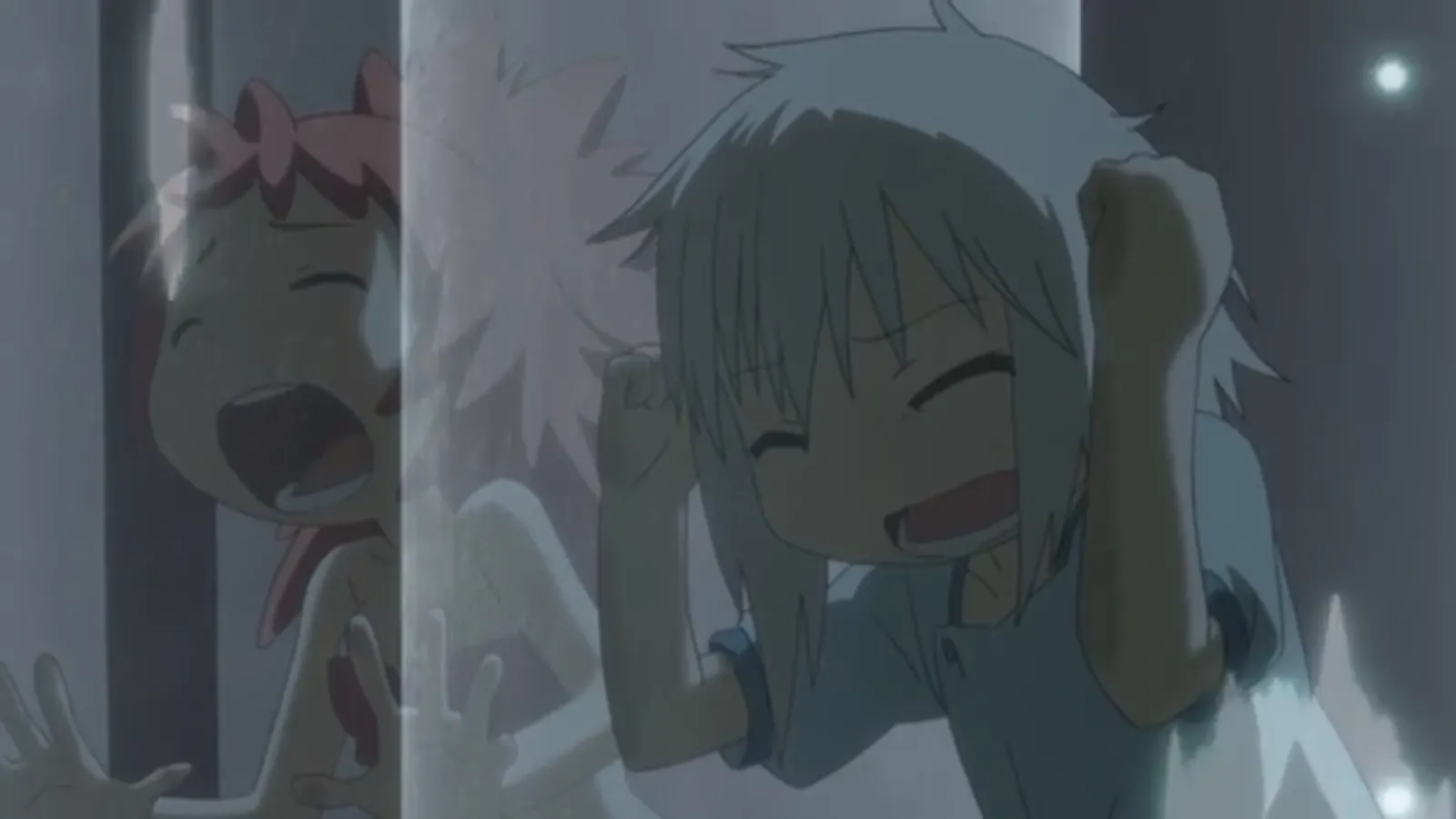
One specific and very upsetting scene involving the sacrifice of two newer, adorable child characters – Mitty and Nanachi – reminded me very much of Roger’s climactic “intercision” fate at the end of Northern Lights (The Golden Compass in the US). I wonder whether this novel was an influence on the author? The movie version omitted the true, horror-filled ending of the book (though I believe it was filmed). Thankfully, Made in Abyss in its anime form does not shy away from the darker parts of the manga’s narrative. In some places the presence of colour even enhances the visceral effect (of Mitty’s spilled viscera specifically).
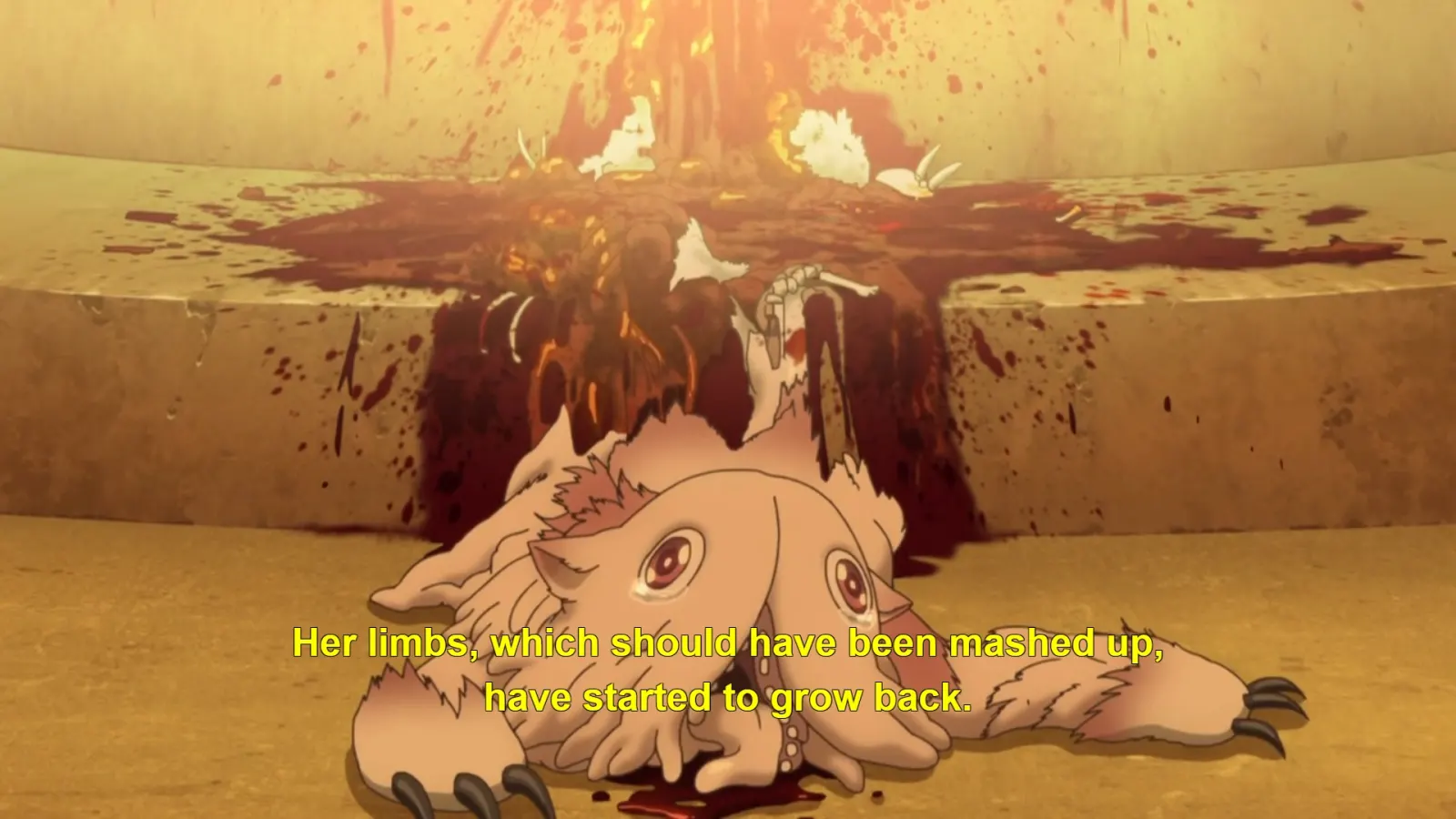
Bondrewd is a truly despicable villain who only gets worse in the subsequent volumes of the manga. This adaptation only covers up to the first two chapters of volume 4. Up to volume 5 has been published in English, with volumes 6 and 7 coming July and September 2019 respectively (according to Amazon anyway). The January 2020 sequel film I expect will cover up to the end of volume 5, which completes Bondrewd’s story. Partway through volume 5, I had to put the book down and stop reading as something so horrible happened that I had to take some time away from the book to clear my head. It takes a very potent story to do that and I shudder at how effective the anime version may be. I also suspect that material may be too strong for television, hence the reason for cinematic release instead.
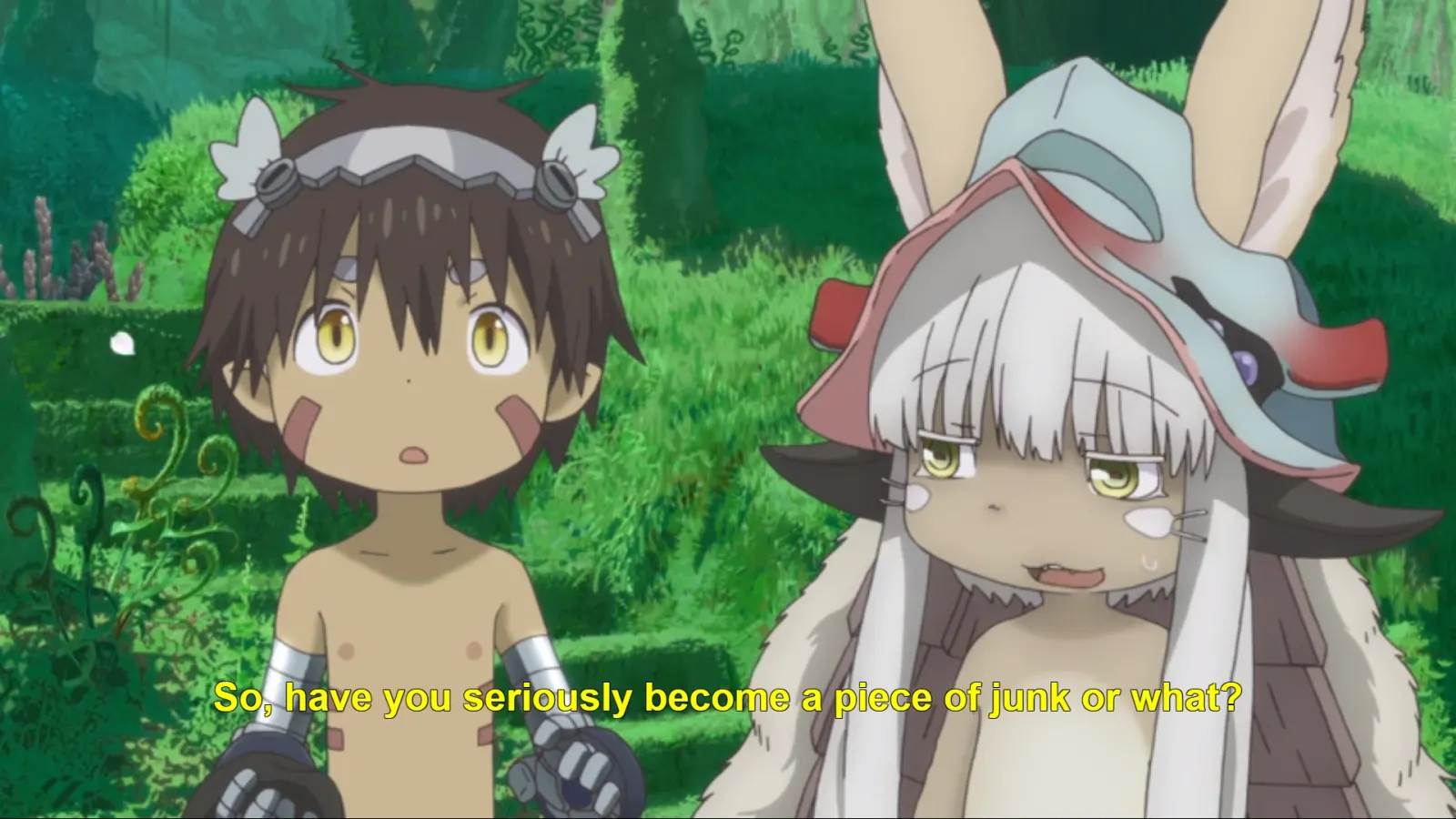
In discussing the darker parts of the story we should move on to Nanachi and Mitty. What a tragic pair. Nanachi is cute and fluffy, smart and sardonic and a dab hand with a rectal suppository (yep – yet more creepiness). Both Reg and Riko seem particularly drawn to Nanachi’s fluffiness despite the fuzzy one’s protestations and demands for personal space. Is the author also a furry? Nanachi may well be my favourite character. Does that make me a deviant too? In another slightly odd touch, the author himself always uses gender-neutral pronouns for Nanachi, though Reg refers to Nanachi as female in the dialogue (possibly erroneously). Nanachi clearly loves their best friend Mitty whose body and mind was horrifically scrambled by the effects of the curse, while Nanachi basically became a kid-sized bunny rabbit. Nanachi apparently was gendered before the transformation, but that gender “has not been revealed”. Again, it’s unclear what the author’s intentions are here, and whether he is making a statement or not.
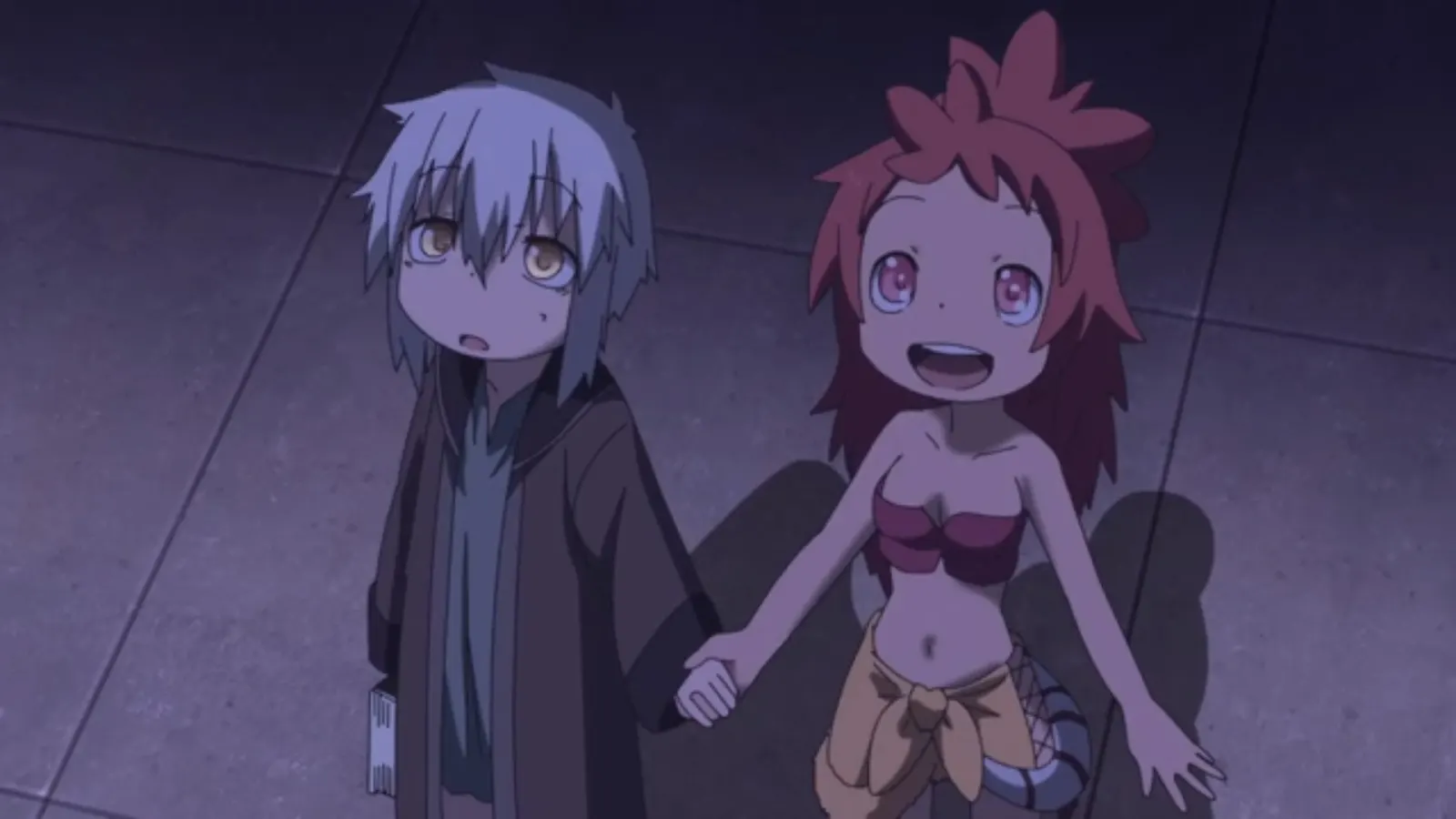
Mitty is horrific – a melted blob of blubber with a vertical slit for a mouth. She’s immortal, can withstand stabbing, extreme mutilation and poison yet feels pain and cries out in distress. Her original form was as a perky and excitable red-headed, disturbingly busty child. I wondered if she suffered from precocious puberty, her levitating bosoms looked so out of place. Imagine if Charles Schulz drew D-cups on Peppermint Patty and you’ll get the idea. Anyway, the final moral quandary of the show is in regards to Nanachi’s request of a mercy killing for Mitty from Reg, something he agonises over for a long time.

Euthanasia is a potent topic for any anime to cover, I’m not sure if I’ve ever seen one that includes it. Along with abortion, it’s an emotive issue not often explored in most animated entertainment. Mitty’s situation is a bit different to anything we might find in the real world though. Unlike real human beings who have no control over the fact they are all without exception going to die eventually – only the mode and timing of it – death can never come naturally to her. It’s as if she has already died and is in Hell. I would be careful at reading too much pro-euthanasia subtext into this. The only way Mitty can die is if Reg uses his ridiculously dramatic doomsday weapon on her, a far cry from the syringes of barbiturates or opiates used to prematurely end the lives of terminal patients.
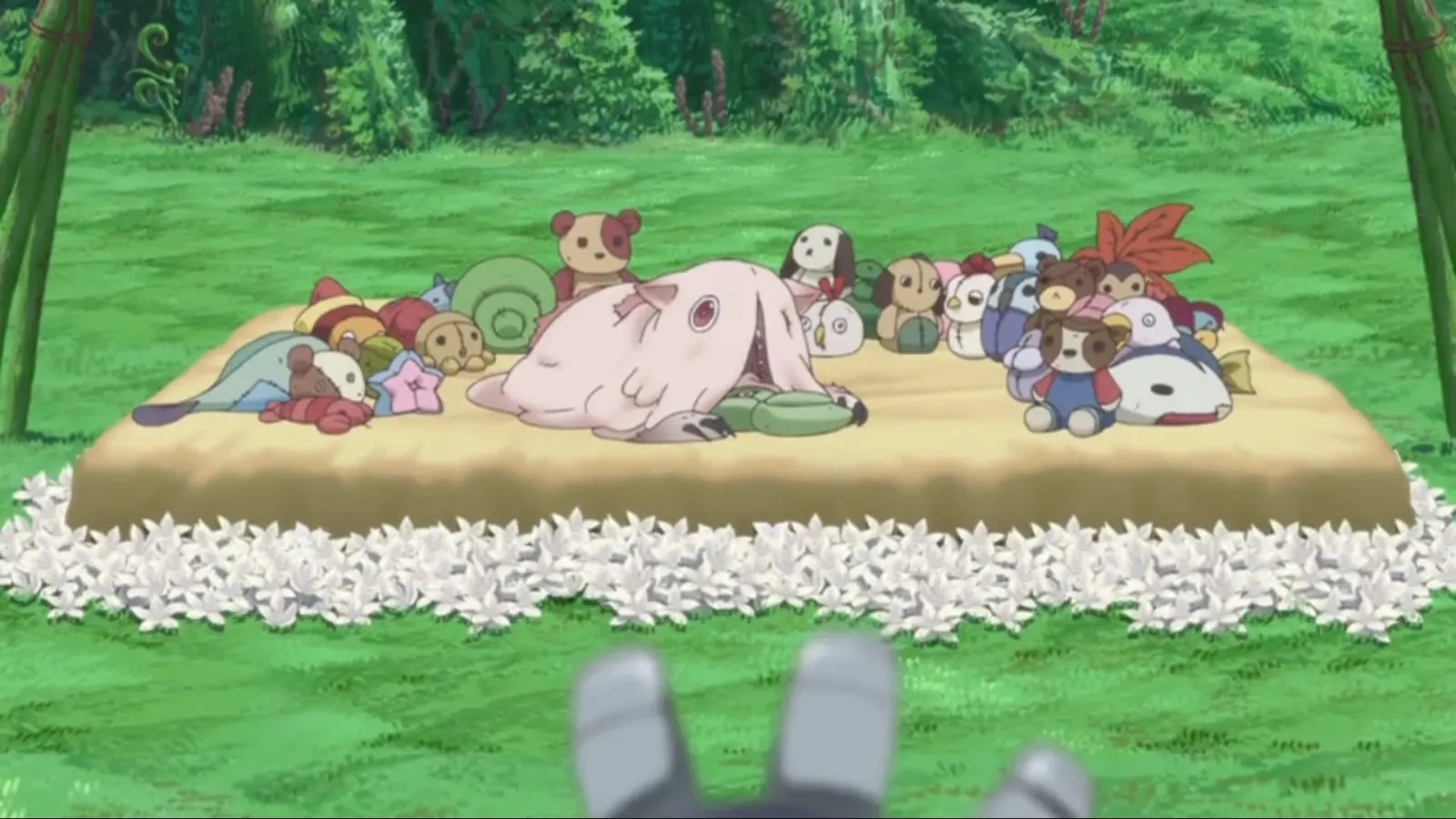
As a professional intimately involved in the palliative care of dying people, I am very wary of the intentions of media that promote an overly positive view of euthanasia. Interestingly, you will find that the majority of palliative care doctors oppose any loosening of euthanasia laws, at least in the UK. This is perhaps quite far removed from the opinion of the average person on the street, but most of them are quite far removed from the reality of dying that I see on a daily basis. I don’t want to turn this into a polemic, but I would restate my warning not to read too much into the presentation of a mercy killing here. It is nothing but emotive fantasy, an interesting moral dilemma with which to torture one of the protagonists. Mitty’s death is one of the saddest scenes in the entire show and I think the character is treated with respect. Nanachi’s reactions seem real.
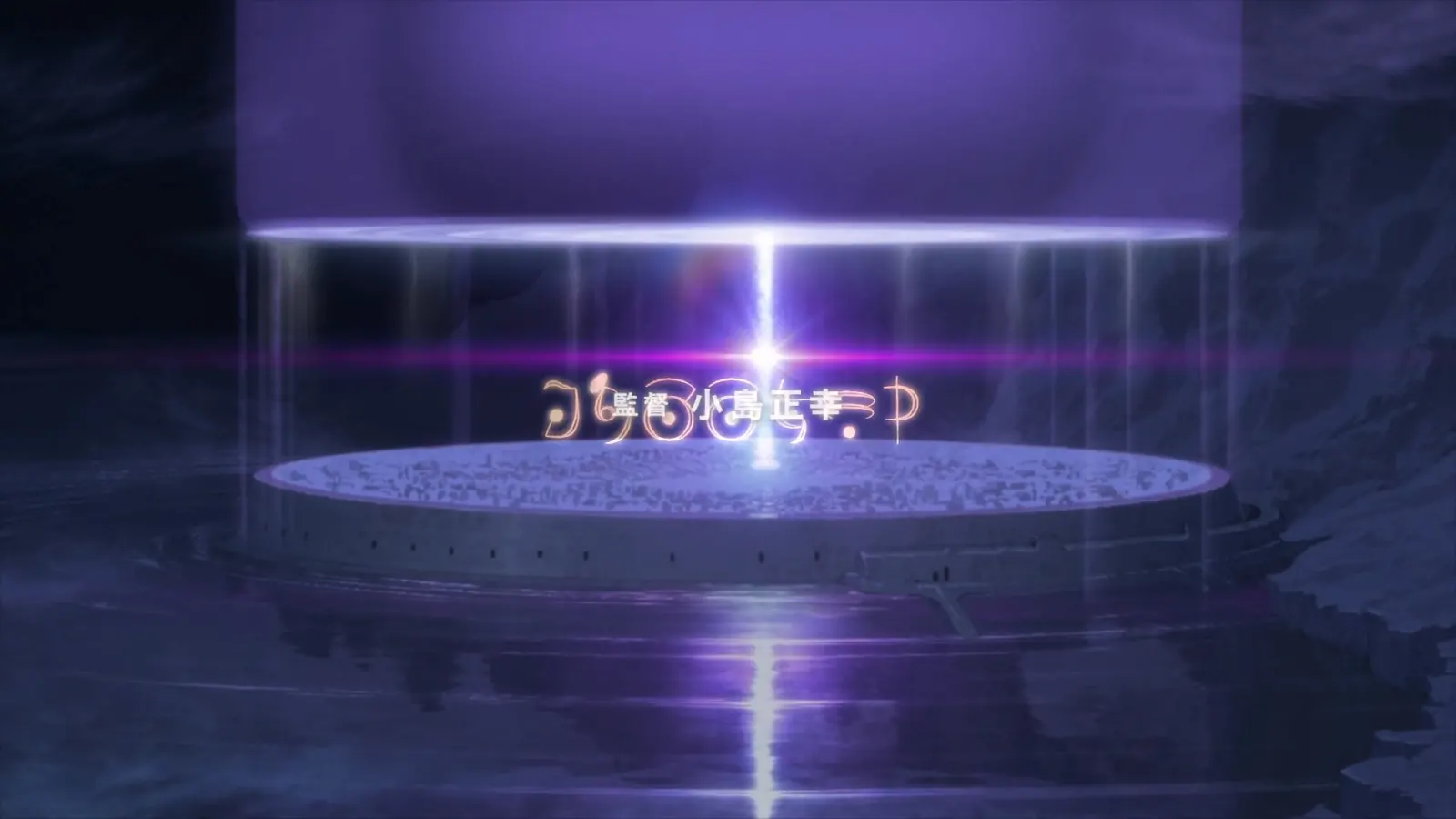
One criticism about the ending of the show is that there isn’t one. My wife in particular was very disturbed about this. “That’s it?” she asked incredulously. “That’s only half a story.” Unfortunately that’s the reality of the anime business these days, 12 or 13 episodes is often all that a show may get, and if it is popular it may take 3-4 years to get a sequel because all the studios are booked so far up in advance. Even the promise of a movie next year wasn’t enough to placate her. In the case of Made in Abyss, the original manga isn’t even finished yet and there’s barely enough for a second season even after the movie has been released. The show ends with the characters packing up to leave on the next phase of their adventure, leaving the door wide open for more.
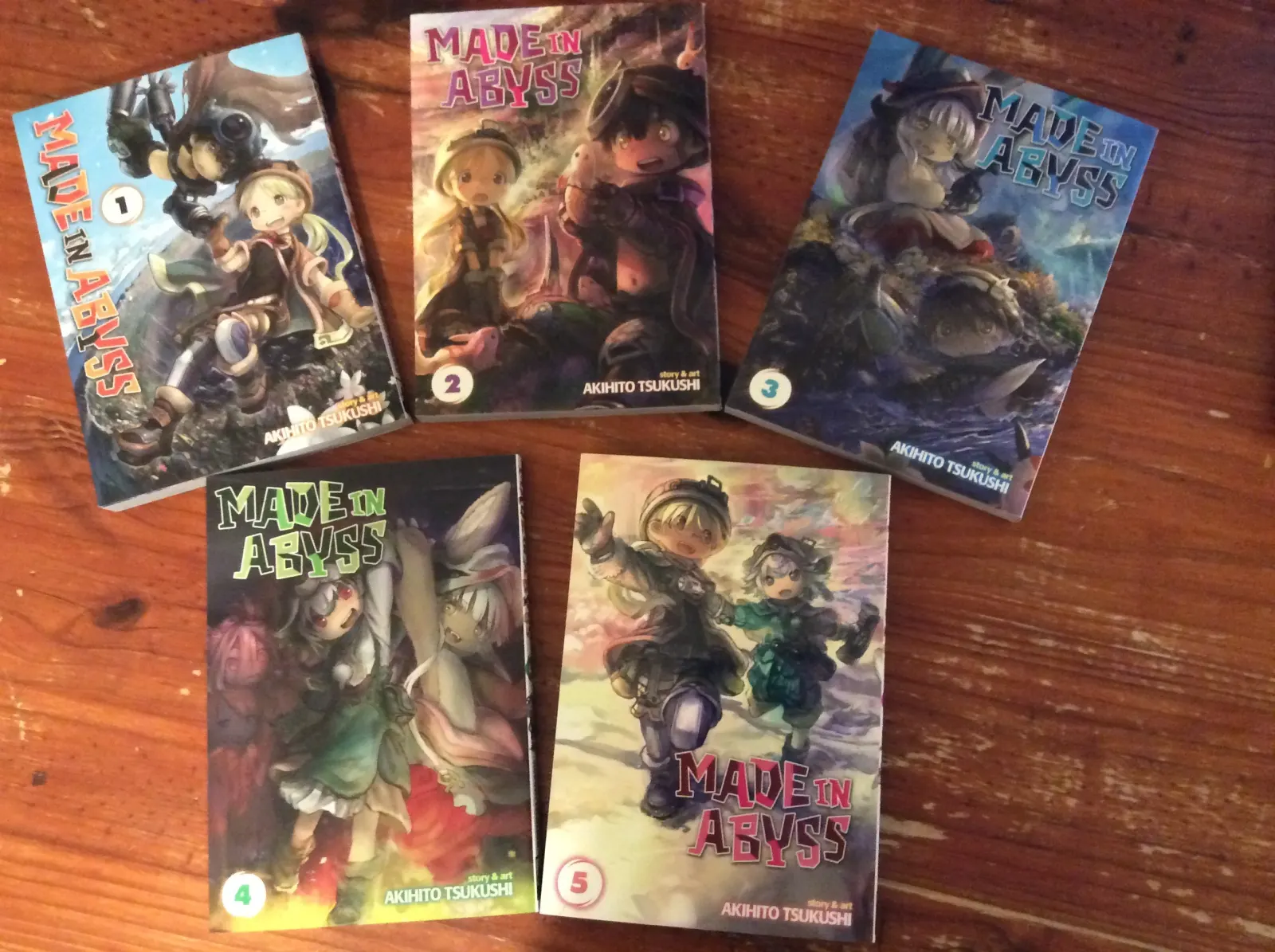
Another very mild criticism concerns the dub – I don’t find this so much of an issue on the sub – it’s the narrator. She is so annoying and adds absolutely nothing to the show with her repetitive portentous fortune-cookie gobbledygook, like (I paraphrase) “The Abyss is full of people who seek secrets, but people are full of secrets, so secrets are people full of karma in the never-ending abyss of secrets of the underworld… karma… secrets… destiny… yadda yadda yadda.” What should be serious scenes of reflection are completely ruined by her deadpan delivery – sorry dear, but just by lowering your voice an octave and speaking slowly does not make your gibberish profound. If only that sound channel could be muted, the show would be enhanced by losing the narrator.
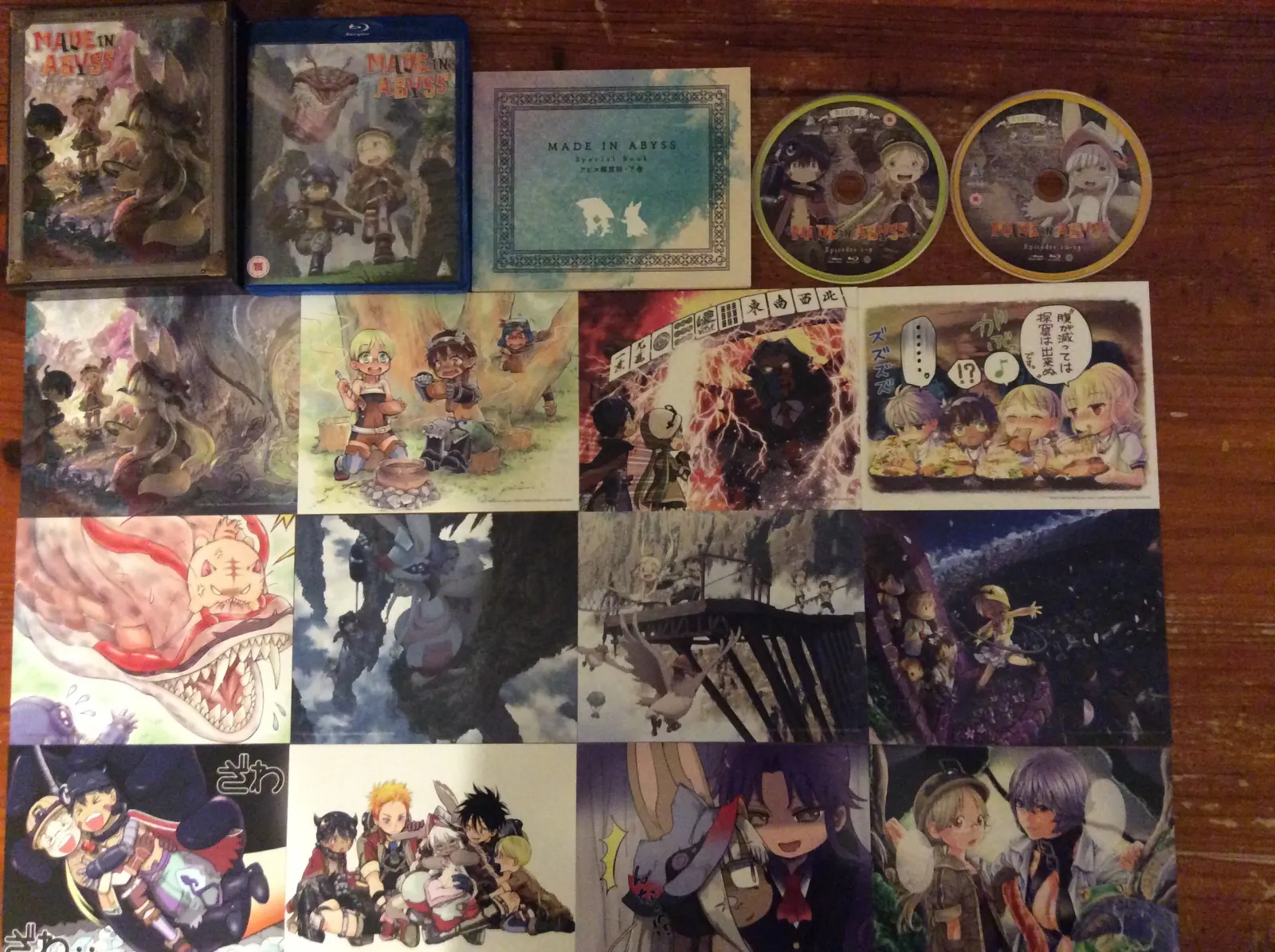
The limited edition UK Blu-ray release is a lovely box containing both discs, 12 postcards by various artists and a fascinating book full of interviews, production and story insights. A UK release for this set is very welcome, as although the show streamed on Amazon Prime (initially behind the short-lived Anime Strike paywall) in the US, here it was only available on the relatively obscure HIDIVE platform. Disc 1 contains episodes 1-9. On Disc 2 are episodes 10-12 plus the double-length episode 13 and some great extras – interviews, documentaries and guided tours of the anime production offices plus the usual trailers, promos and clean opening and ending animations. Is it really worth £60? Well, if this was an Aniplex USA release I expect it would cost 3-4 times as much. I think this is something I’d watch again in future and I’m likely to share it with other people. It ranks up there in my top 3 anime shows, along with Neon Genesis Evangelion and the original Steins;Gate.
SUMMARY:
Pros: Gorgeous production design, expressive characters, compelling story, fascinating setting, intriguing backstory, very deep, dark subject matter, great supplementary book, nice on-disc extras.
Cons: Incomplete story, creepy fixation with body parts and functions, annoying narrator.
Made in Abyss Collector’s Edition Blu-ray Boxset
Directed by Masayuki Kojima (Kinema Citrus)
Based on the manga by Akihito Tsukushi
Released by MVM Films
Runtime: 325 mins
Languages: Audio: Japanese and English 2.0, English Subtitles
UK Release Date: 8th April 2019
Original Japanese TV broadcast: 7th July 2017 – 29th September 2017
You’re reading AniTAY, the anime-focused portion of community-run blog Talk Amongst Yourselves. AniTAY is a non-professional blog whose writers love everything anime related. To join in on the fun, check out our website, visit our official subreddit, follow us on Twitter, or give us a like on our Facebook page.

Get involved!
Comments